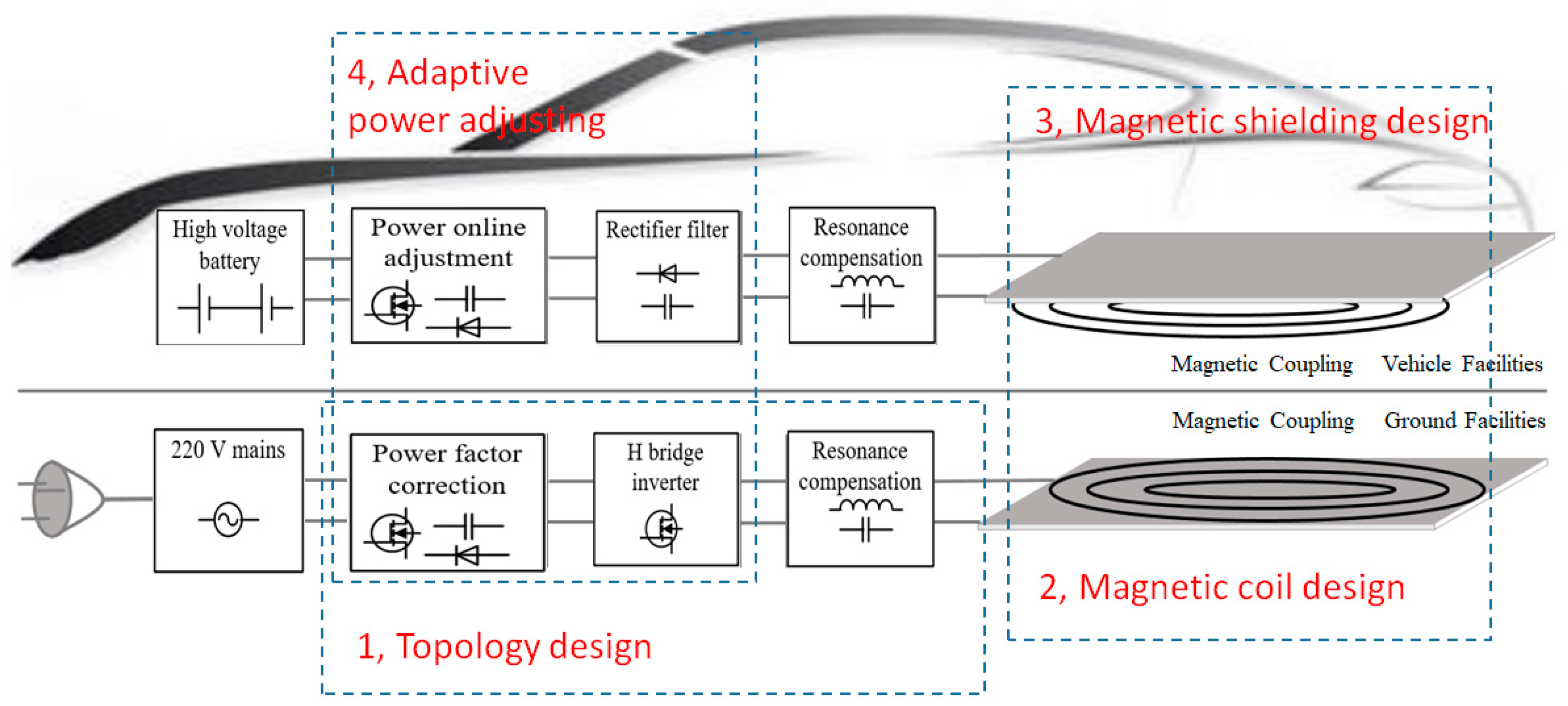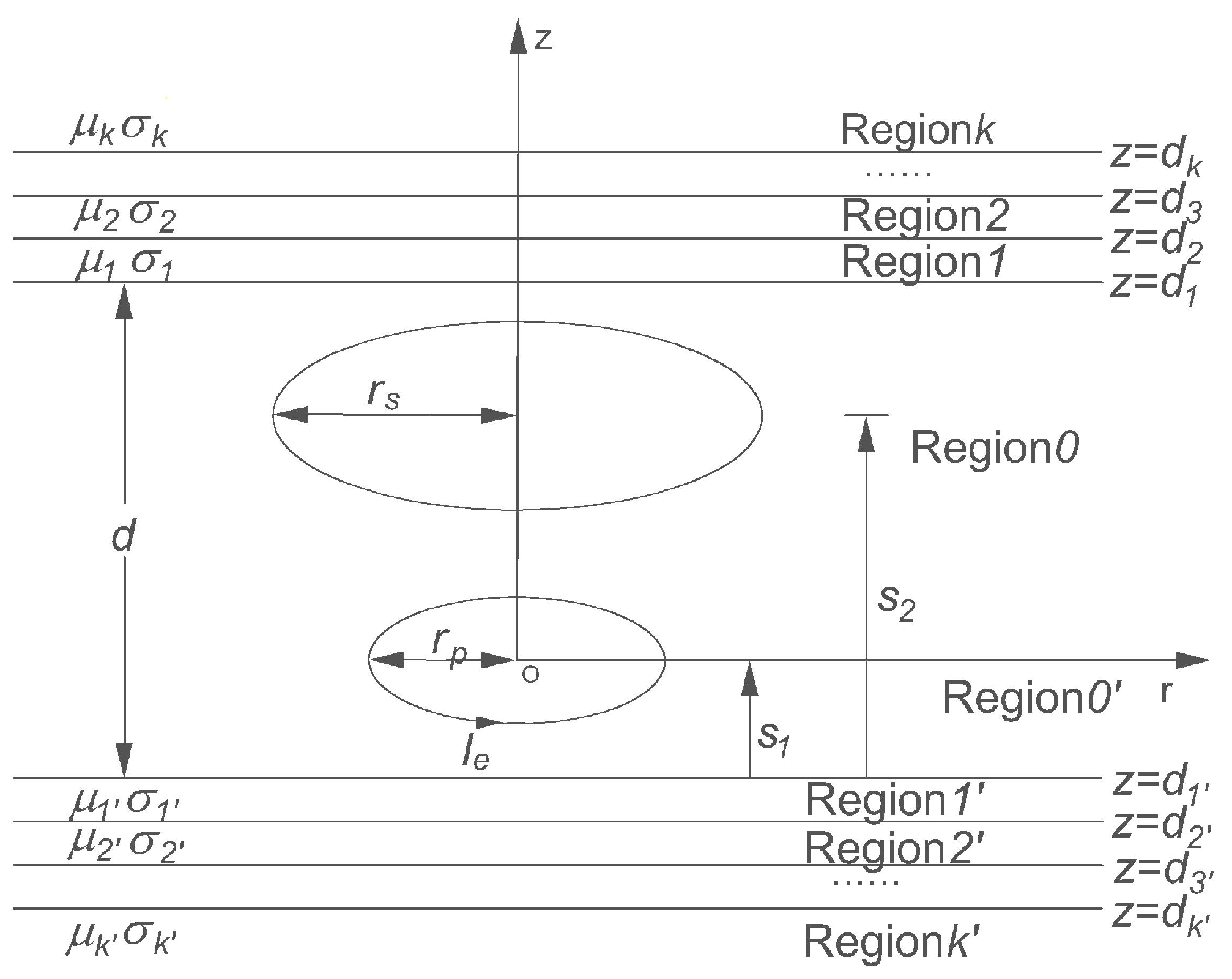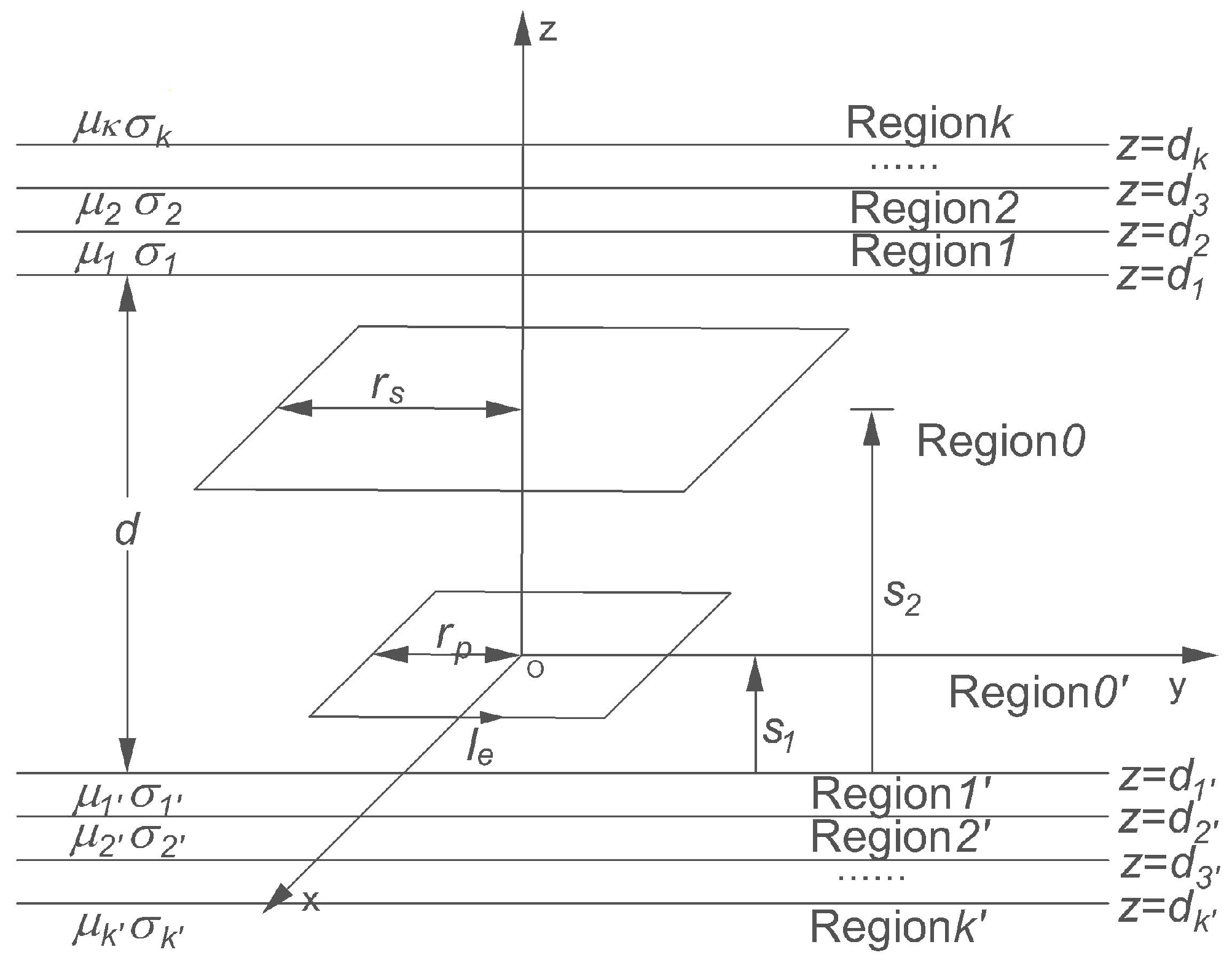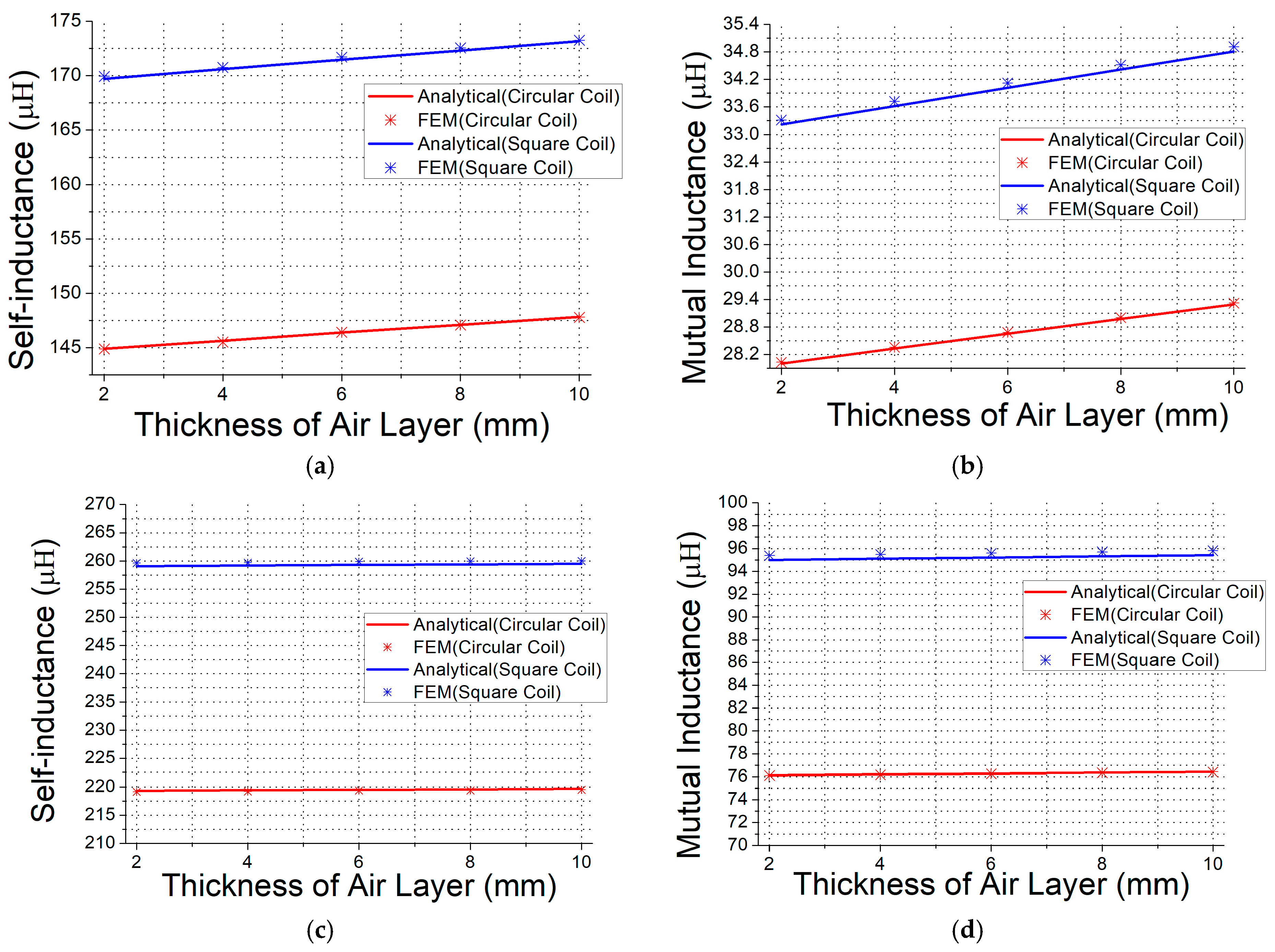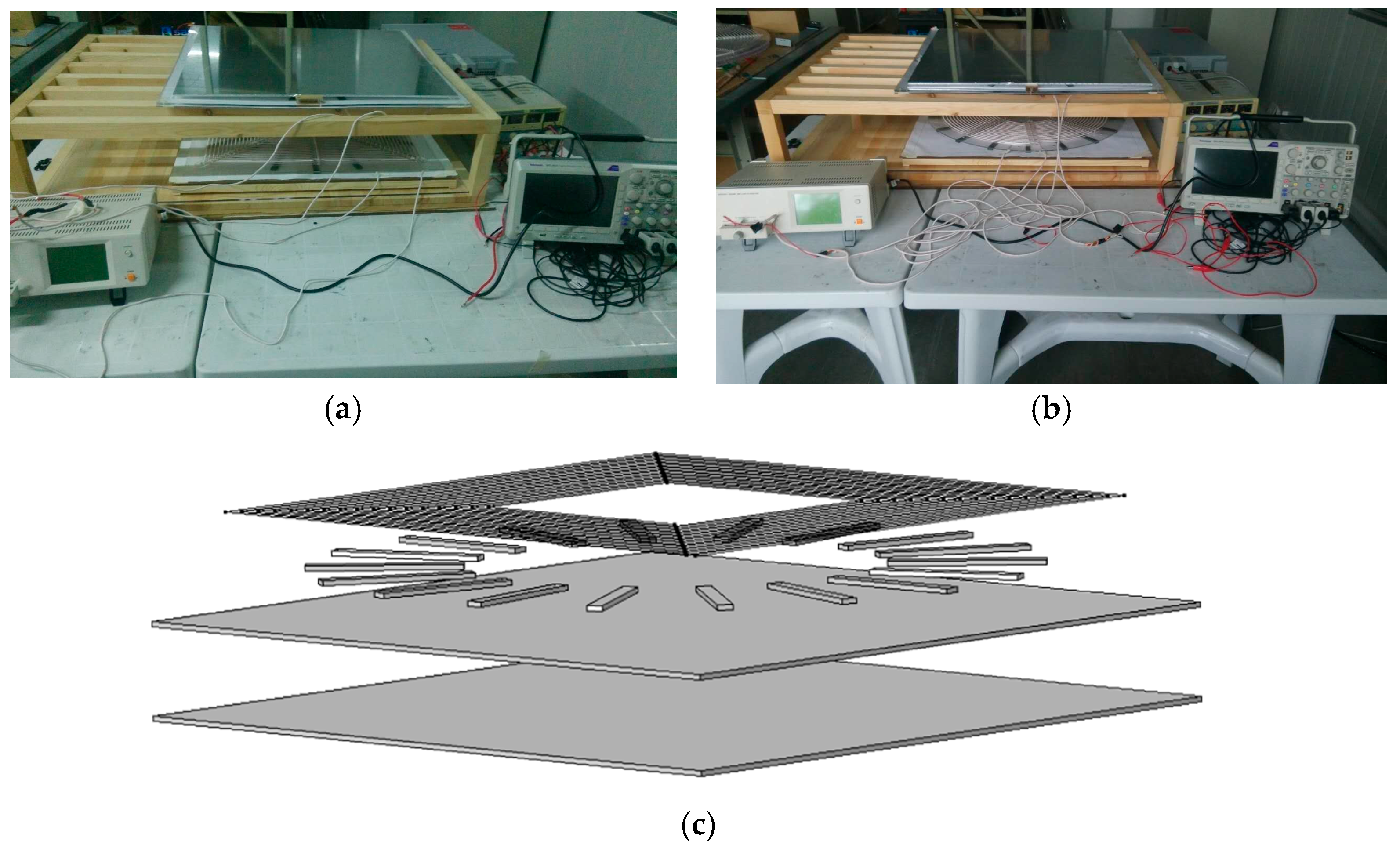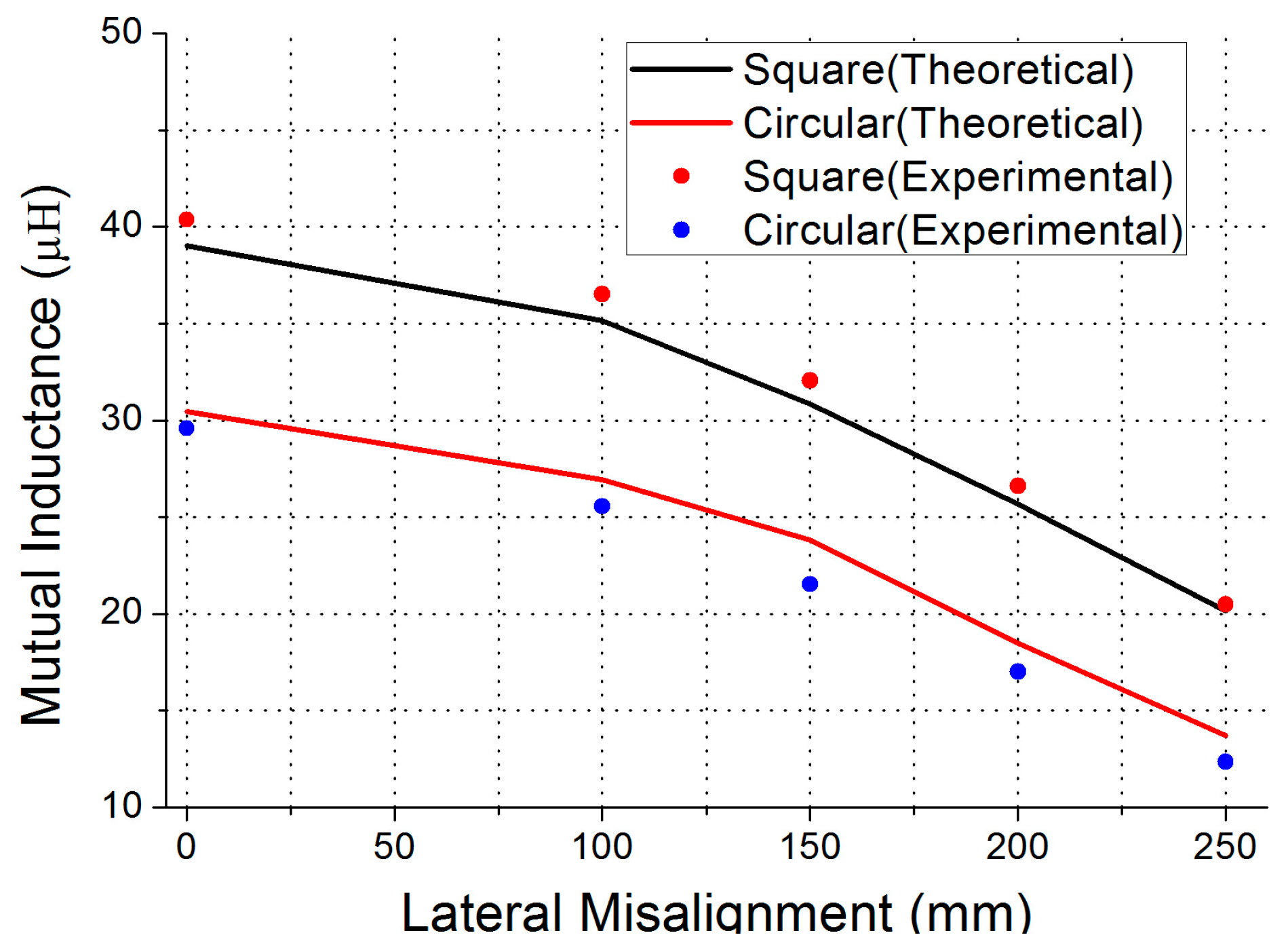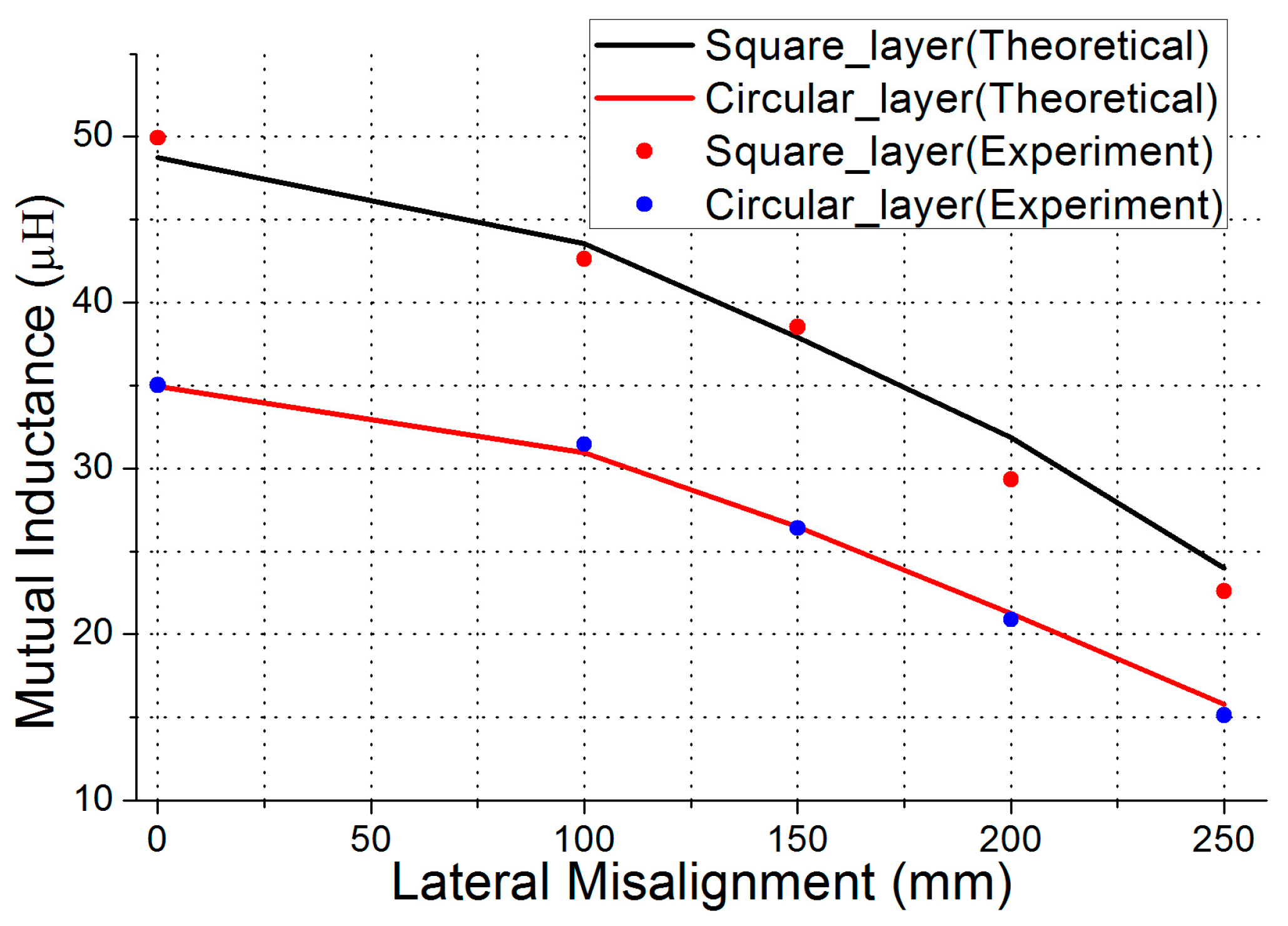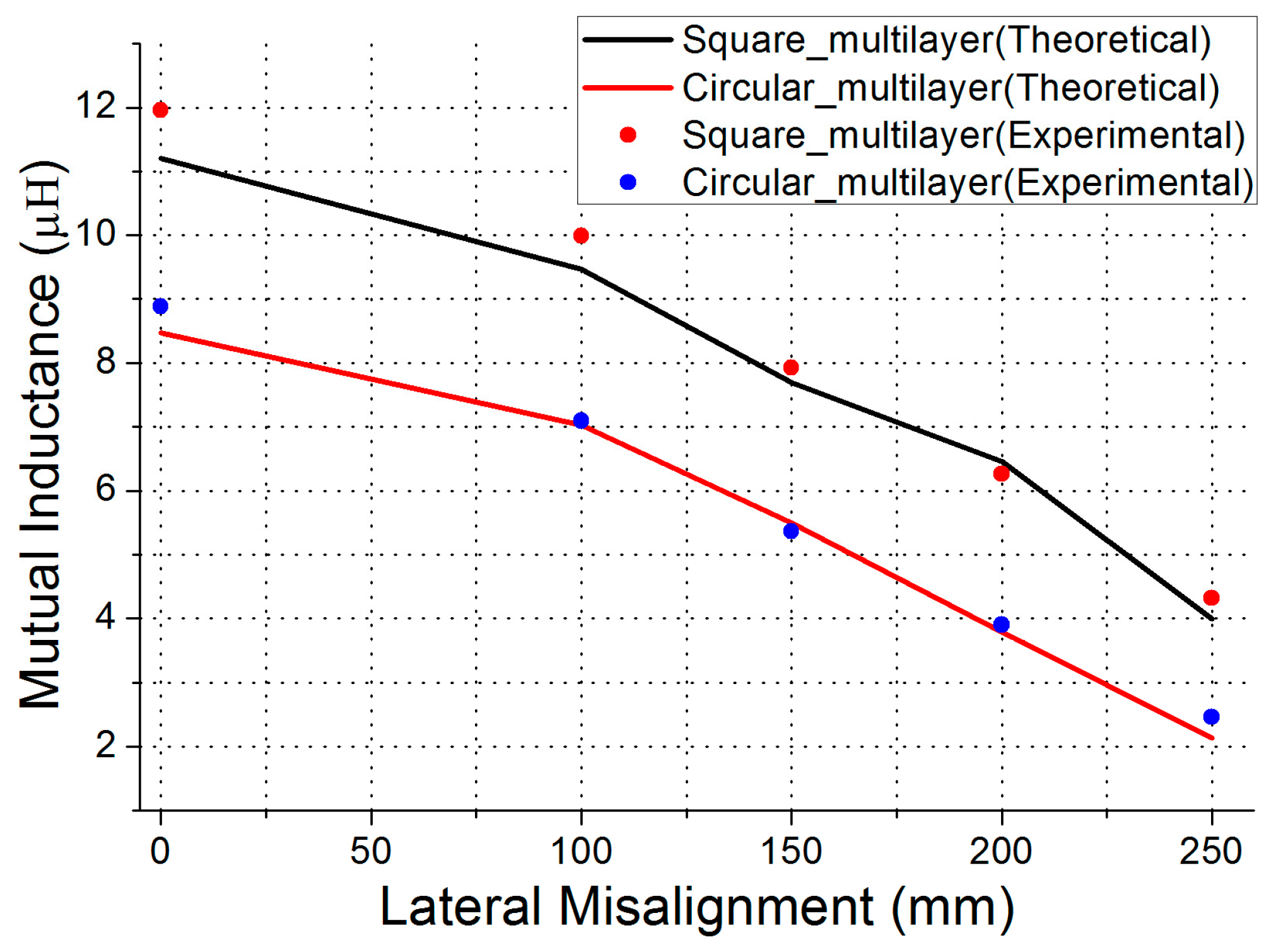In this section, several magnetic field theoretical models of both circular and square coils are proposed in order to obtain the self-inductance and mutual inductance. All of these models are excited by the time-harmonic current. Given that the coils are wrapped by litz wires, the skin effect can be neglected with relative low operating frequencies varied from 80 to 100 kHz [
27]. On the assumption that the coils can be regarded as filaments, the magnitude of B-field is calculated via magnetic vector potential.
2.1. Mutual Inductance of Circualr Coils with Two Multilayer Media
In the cylindrical coordinate shown in
Figure 2, a
k-layer medium is located at a coordinate
d1 above the pick-up circular filament with radius of
rs. The layers are numbered from 1 to
k in an upward direction. Another
k’-layer medium, of which layers are numbered from 1’ to
k’ in a downward direction, is placed beneath the excited circular filament with radius of
rp, which occupies the region
z ≤ d1’. Each region of the multilayer medium has a thickness
except regions
k and
k’, which are considered semi-infinite.
d is the distance between the upper surface of the multilayer media and the lower surface of the upper multilayer media. Each region is homogeneous and isotropic with an electrical conductivity
σk and a relative permeability
µk.
The magnetic field is produced by the sinusoidal current
in the primary coil at
z = s1. On the hypothesis that the displacement current is neglected, it is easy to obtain Poisson’s equation by using the Coulomb gauge condition.
where
Je is the current density, and
A is the magnetic vector potential.
On the basis of the Maxwell equations and cylindrical symmetry, the magnetic vector potential only has an
eφ-component and the PDEs of each regions are shown in the following expressions [
28]:
Regions 1 to k and 1’ to
k’ are expressed as
and regions 0 and 0’ are expressed as
where
is the constant of permeability of vacuum, and
Ie is the magnitude of time-harmonic current.
AΦ,k is the
eφ-component of the magnetic vector potential in each region.
is defined as follows:
Based on the Fourier–Bessel transform [
29], the one-dimensional transformed versions of Equations (2) and (3) are obtained.
Regions 1 to
k and 1’ to
k’ are expressed as
Regions 0 and 0’ are expressed as
The general solution for each region is seen in Equation (6):
where 𝜂
k is a complex parameter that depends on frequency and material properties of each region:
Then, according to the boundary conditions that hold at the position of the coil and at the interface of the adjacent regions, the 2(k + k’) + 2 unknown coefficients are obtained.
At the position of the excited filament (
z = 0),
Eφ is continuous and
Hr is discontinuous, which equals the surface current density of the excited filament:
The above Equation (5) can be also rewritten in matrix notation:
At the interface of the regions k and
k − 1(
z =
dk), both
Eφ and H
r are continuous:
Equation (4) can be expressed in matrix notation:
where
I is the identity matrix of order 2, and
is the following square matrix of order 2:
where
ζk =
𝜂k/
µk, and
tk is the thickness of the nth region.
Because the magnetic vector potential tends to be zero when z approaches positive infinity and negative infinity, both
Dk and
Ck’ are zero. Therefore,
and
are matrices of dimension 2 × 1:
From Equations (9) and (14), it is easy to obtain the calculations below.
According to Equations (9) and (14), all of the unknown coefficients can be calculated. In terms of the mutual inductance, only D0 and C0 need to be calculated.
In order to compute the mutual inductance of the coils, the total voltage amplitude induced at the pick-up coil (
z =
s2 −
s1) must be evaluated. It is calculated in Equation (15):
Then
where Im is the function used for extracting the imaginary part of a complex number.
2.2. Mutual Inductance of Square Coils with Two Multilayer Media
The basic structure of a theoretical model is depicted in
Figure 3. In this figure, all of the parameters are the same as the definition in
Figure 2.
As for rectangular coils, it is more complicated to establish its math model by several PDEs due to its non-cylindrical symmetry feature. Before the whole system’s model is set up, it is necessary to determine the magnetic flux density distribution of the two rectangular coils in the air first.
In regions 0 and 0’, the magnetic flux density B can be divided into two parts. Bi is excited by the current flowing in the primary coil and Br is produced by the induced eddy current.
The first step is to calculate the
Bi-field. According to the relationship between the magnetic flux density and the magnetic vector potential, the magnetic vector potential of arbitrary point
p(
x,
y,
z) can be derived by integrating the source point (
x’,
y’,
z’) as seen in Equation (17) below:
where
J is the current density and
s is the current distribution of an excited coil. The distance between
p(
x,
y,
z) and source point (
x’,
y’,
z’) is denoted by
R.
In order to solve Equation (17), the Dual Fourier Transformation and its inverse method are applied [
30], and the z-component of the
Bi-field of spatial frequency domain can be obtained:
As for the
Br-field, it can be calculated using the following equations.
By applying the Dual Fourier Transformation, the z-component of the
Br-field of the spatial frequency domain in regions 0 and 0’ can be expressed as Equations (22) and (23) below:
Similar to the
Br-field calculation in regions 0 and 0’, the
z-component of the
Br-field of spatial frequency domain can also be obtained:
where
Then based on the boundary conditions, at the interface of regions
k and
k − 1, the z-component of B and the
x-component of H must be continuous except at the position
z = 0:
The resulting equations can be rewritten in matrix notation:
At
z =
dk (
n = 2~
k and 2’~
k’),
I is the identity matrix of order 2 and
is the following square matrix of order 2.
Since the magnetic vector potential tends to be zero when
z approaches positive infinity and negative infinity, both
Dk and
Ck’ are zero, which is similar to the circular coil model. As such,
and
are matrices of dimension 2 × 1:
where
ζ =
𝜂k/
µk.
According to Equations (27) and (31), it is easy to obtain the following equations.
Then, by solving the above equations, the z-component of B in regions 0 and 0’ can be calculated.
Because
Bz is perpendicular to the pick-up coil, the mutual inductance can be calculated using the following equation:
In the case of two multi-turn planar spiral coils, it is difficult to calculate their mutual inductance directly. According to the superposition principle, the mutual inductance between two multi-turn coils is the sum of the mutual inductances between pairs of turns and the total mutual inductance can be seen in Equation (34) below.
where
Mpq represents the mutual inductance between
p-th turn and
q-th turn coils.
ns and
np are the number of turns of the excited coil and the pick-up coil, respectively.
